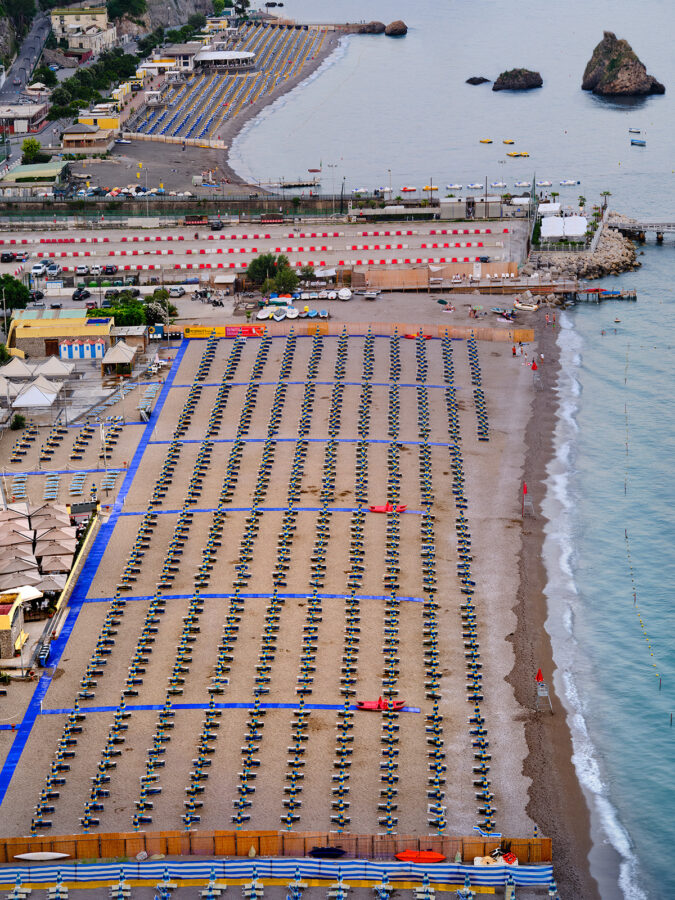Imprints of Absence

Vietri Sul Mare
2025
archival print/dibond/white frame
59-44.8 inches, (edition 5 + 2 a.p.)
The use of beaches in Italy reflects the country’s unique social and cultural dynamics, where the distinction betwee ‘lidi privati and spiagge libere‘ plays a central role. Along Italy’s coastlines, especially in popular regions such as Tuscany, Liguria, and the Amalfi Coast, many beaches are privately managed. These private beaches offer extensive facilities such as sun loungers, umbrellas, changing cabins, showers, and beach bars, almost always for a fee. They are maintained by individuals or enterprises, who have the right to manage specific sections of the beach, even though the coastline technically remains state property. On the other hand, there are the public beaches, where everyone has free access without having to pay. These often narrow strips of beach typically have few or no facilities and are maintained by the government or local communities. It is fascinating to see how the remaining public spaces are informally organized and used. The contrast between private and public beaches raises interesting questions about accessibility and social inequality. While private beaches offer a certain level of luxury and comfort, there is often criticism of the fact that large parts of the Italian coastline become inaccessible to people who cannot afford these costs. This has led to tensions and debates about the right to free access to the sea, a right that is historically and culturally deeply rooted in Italy. The interplay between private and public spaces on Italy’s beaches not only reflects economic disparities but also highlights a broader dialoque about the preservation of cultural and natural heritage in a country that relies so heavily on tourism.


